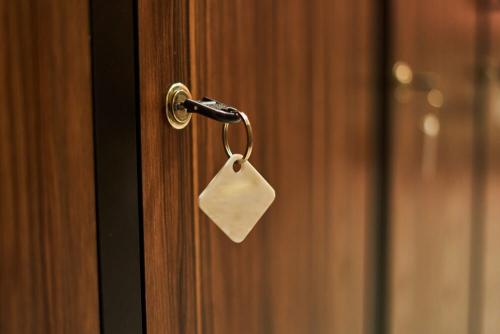Wardrobe Security: Finding the Ideal Lock for Your Closet

Your closet is a sanctuary for your personal belongings, and ensuring its security is essential. Whether you need to keep sensitive items safe or maintain privacy, choosing the right lock for your closet can make all the difference. In this guide, we'll explore the world of closet locks, demystifying the various types, features, and factors to consider when selecting the best lock for your specific wardrobe security needs. By the end of this guide, you'll have the knowledge to make an informed decision and keep your wardrobe safe and secure.
Understanding the Importance of Closet Locks
Closet locks serve multiple purposes beyond security. Here's why finding the right lock is crucial:
Privacy: Closet locks ensure your privacy and keep personal items hidden from view.
Child Safety: Locks can prevent children from accessing potentially dangerous or fragile items.
Security: Valuables, sensitive documents, and even clothing can be protected from unauthorized access.
Types of Closet Locks and Their Features
The world of closet locks offers various options, each with its unique features and mechanisms. Let's explore some common types of closet locks:
1. Cam Locks:
Features: Cam locks are simple and versatile. They consist of a cylinder and a cam that turns to lock or unlock.
Advantages: Easy to install, ideal for wardrobes, cabinets, and drawers, and available in various designs.
2. Magnetic Locks:
Features: Magnetic locks use magnets to secure the door. They are often battery-operated and can be accessed with a key or key card.
Advantages: Provides discreet and secure locking, ideal for sensitive or valuable items.
3. Biometric Locks:
Features: Biometric locks use fingerprint recognition for access. They may also include additional security features like PIN codes or Bluetooth connectivity.
Advantages: High-security level, convenient access, and no need for keys or cards.
4. Padlocks:
Features: Padlocks come in various designs, including combination locks, key-operated locks, and digital padlocks.
Advantages: Versatile, portable, and suitable for wardrobes with hasps or loops.
5. RFID Locks:
Features: RFID locks use radio frequency identification for access. Users typically need RFID cards or fobs.
Advantages: Convenient access control, especially for shared wardrobes.
Factors to Consider Before Installing a Closet Lock
Choosing the right closet lock involves evaluating several key factors to ensure it meets your specific needs:
Security Level: Determine your security requirements based on what you plan to store in the closet.
Installation: Consider how the lock will be installed. Some locks are easier to install than others.
Access Control: Decide who needs access to the closet and how you want to grant it.
Power Source: Some locks are battery-operated, so consider the power source and maintenance requirements.
Budget: Set a budget that aligns with your security needs and installation capabilities.
Tools and Materials Needed for Closet Lock Installation
The tools and materials needed for closet lock installation depend on the type of lock you choose. Common tools include a screwdriver, drill, measuring tape, and a pencil. The lock you select will come with its specific installation instructions and necessary components.
Step-by-Step Guide to Installing a Cam Lock
Here's a step-by-step guide to installing a cam lock:
Measure and Mark: Measure and mark the location for the lock on the closet door. Ensure it's at a comfortable height and easy to access.
Drill Holes: Use a drill to create the necessary holes for the lock cylinder and cam.
Insert Cylinder: Insert the lock cylinder into the hole from the outside of the door.
Install Cam: Place the cam on the inside of the door, aligning it with the cylinder.
Secure Components: Attach the backing plate and secure the lock components with screws.
Test the Lock: Test the lock to ensure it operates smoothly and securely.
Common Mistakes to Avoid During Closet Lock Installation
Avoid these common mistakes when installing a door lock:
Poor Alignment: Ensure the lock components align correctly for smooth operation.
Inadequate Screws: Use the screws provided with the lock for secure installation.
Over-tightening: Avoid overtightening screws, as this can damage the lock or door.
Neglecting Maintenance: Regularly inspect and maintain your lock to prevent any issues.
Maintaining Your Closet Lock
Proper maintenance is essential to keep your closet lock in good working condition:
Lubrication: Periodically apply a lubricant to the lock to keep it functioning smoothly.
Cleaning: Clean the lock and key components to remove dirt and debris that could affect its operation.
Inspect for Wear: Regularly inspect the lock for signs of wear, such as loose parts or malfunctioning mechanisms.
Address Issues Promptly: If you notice any problems, address them promptly to ensure the security of your closet.
Conclusion: Enhancing Wardrobe Security with the Right Closet Lock
In conclusion, the security of your wardrobe is essential for safeguarding your personal belongings and maintaining your privacy. By considering factors such as security level, installation, access control, power source, and budget, you can select a closet lock that meets your specific needs. Proper installation, maintenance, and regular inspections are key to ensuring your closet lock functions effectively and provides the security and peace of mind you desire. By taking these measures, you can enhance the security of your sanctuary and protect your belongings with the ideal closet lock.
Post Your Ad Here
Comments